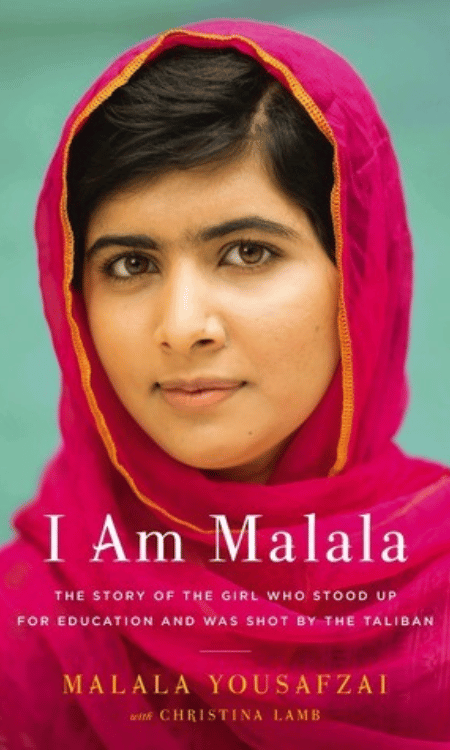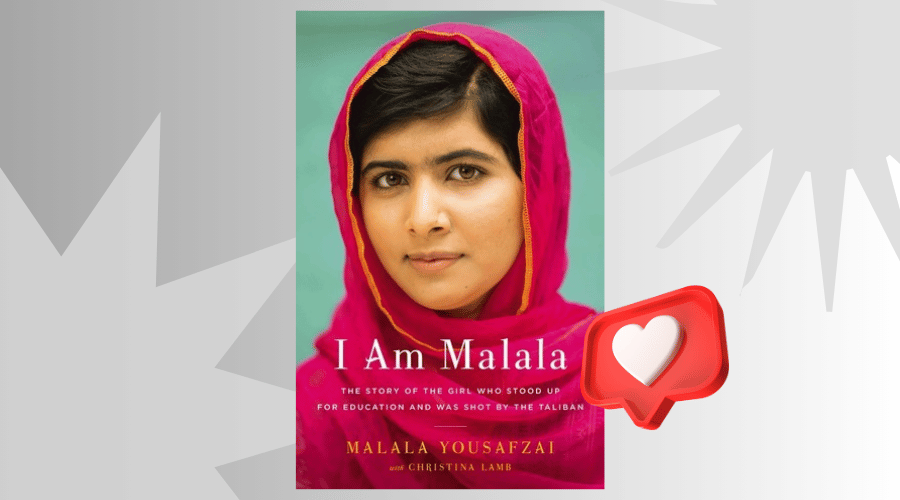I Am Malala is a powerful memoir by Malala Yousafzai, co-authored with journalist Christina Lamb. The book tells Malala’s story as a Pakistani girl who stood up for girls’ education, despite the growing threats from the Taliban in her region. She was famously shot by a Taliban gunman in 2012 but miraculously survived, and her story became an international inspiration for human rights and education activism.

| Author | Malala Yousafzai, Christina Lamb |
| Publication date | November 1, 2012 |
| Goodreads Rating | 4.15 |
| Pages | 327 |
| ISBN | 0316322407 |
| Topics | Nonfiction, Biography, Memoir, Feminism, Autobiography, History, Biography Memoir, Politics, Pakistan |
I am Malala Book Summary
Malala Yousafzai grew up in the Swat Valley of Pakistan, where education for girls was discouraged and eventually banned by the Taliban. From a young age, Malala had a strong passion for learning, influenced by her father, who ran a school and supported education for all. As the Taliban began taking control of her hometown, life became dangerous, especially for girls who dared to go to school.
Despite the threats, Malala spoke out publicly and became an advocate for girls’ education, even blogging for the BBC about her experiences under Taliban rule. This made her a target, and in 2012, she was shot in the head on her way home from school. Miraculously, Malala survived and, after extensive treatment, went on to recover in England. Her story spread globally, making her a symbol for peace and the fight for education.
After the attack, Malala’s mission only grew stronger. She founded the Malala Fund, continues to advocate for education rights, and even won the Nobel Peace Prize, becoming the youngest-ever recipient at just 17. The book is not just a story about her life but also a call to action, emphasizing the importance of education as a basic human right and inspiring people of all ages to fight for change.
Where does I am Malala take place?
I Am Malala mostly takes place in the Swat Valley of Pakistan, where Malala grew up. The Swat Valley is known for its natural beauty but became a battleground when the Taliban took control and started enforcing strict rules, especially against girls’ education. Malala describes the beauty of her home, her school, her family life, and how the increasing restrictions and violence impacted everything she loved.
After she was attacked, the story moves to England, where she was taken for medical treatment and eventually settled with her family. The book captures both the warmth of her home in Swat and the challenges of adapting to a new life in the UK while continuing her fight for education worldwide. It’s a journey from her small village to the global stage, all fueled by her unshakable passion for learning and justice.
How many chapters are in I am Malala?
I Am Malala has 24 chapters, plus a prologue and an epilogue. Each chapter covers different parts of Malala’s journey, from her early life in Swat Valley to her activism, the Taliban’s rise, the attack, and her recovery and continued advocacy work. The prologue introduces us to Malala’s world before the attack, while the epilogue wraps up her journey and looks forward to her ongoing mission for education rights. The chapters are pretty detailed and give a full view of her experiences and the events that shaped her activism.
Important Events in Malala’s Life
Malala’s life is filled with powerful events that define her story and her impact. Here are some of the most important ones:
- Birth and Early Childhood in Swat Valley: Malala was born in 1997 in Mingora, Pakistan. Her family and upbringing instilled in her a love for learning, especially her father’s support, as he ran a local school and believed in equal education.
- Taliban’s Rise and Banning of Girls’ Education: When Malala was around 10, the Taliban began gaining control in Swat, imposing strict rules, especially against girls attending school. This was a major turning point, pushing her to start speaking out publicly about the importance of education.
- BBC Blog (2009): At just 11, Malala started blogging for the BBC Urdu under a pseudonym, sharing her experiences under Taliban rule. This gained international attention and helped her voice reach a larger audience.
- Advocating for Education: Malala’s public advocacy grew as she continued speaking out, giving interviews and appearing in documentaries to spread awareness about the education crisis for girls in Pakistan.
- The 2012 Attack: This was a defining moment in her life. At age 15, Malala was shot in the head by a Taliban gunman while riding a bus home from school. This tragic event drew global attention and made her an international symbol for peace and education rights.
- Recovery and Move to England: Malala was transferred to Birmingham, UK, where she recovered and began a new life with her family. Although she was far from home, she continued her advocacy on an even larger scale.
- Malala Fund Foundation (2013): Alongside her father, Malala founded the Malala Fund to advocate for girls’ education worldwide, promoting access to 12 years of free, quality education for every girl.
- Youngest Nobel Peace Prize Winner (2014): At age 17, Malala became the youngest recipient of the Nobel Peace Prize for her work advocating for children’s right to education, solidifying her as a global icon for change.
- Studying at Oxford University (2017): Malala fulfilled her dream of attending college, studying at Oxford and graduating in 2020. Her education journey came full circle, symbolizing her resilience and commitment to learning.
Each of these events played a key role in shaping Malala’s story and her mission to create lasting change for girls’ education worldwide.
How Many Books has Malala Written?
Malala Yousafzai has authored three books so far:
- I Am Malala (2013) – Her most well-known book, co-written with Christina Lamb, is a memoir that tells her story of growing up in Pakistan, advocating for girls’ education, surviving a Taliban attack, and becoming a global symbol for peace and rights.
- Malala’s Magic Pencil (2017) – A children’s picture book inspired by her childhood dreams and experiences. It tells the story of a young Malala who imagines using a magic pencil to make the world a better place, introducing her story and message to a younger audience.
- We Are Displaced: My Journey and Stories from Refugee Girls Around the World (2019) – In this book, Malala shares her personal experience of displacement and highlights the stories of other young refugees from around the world, focusing on their courage and resilience.
Each book addresses different aspects of her journey and advocacy, aiming to spread awareness about education, equality, and the power of young voices.
I am Malala Book Review
I Am Malala is more than just a memoir; it’s an empowering story about a young girl who dared to stand up for her beliefs. Malala takes us through her journey growing up in Pakistan’s Swat Valley, her love for learning, and the unimaginable obstacles she faced under Taliban rule. Despite a life-threatening attack, her passion for education and advocacy only grew stronger.
Malala’s storytelling feels both intimate and universal, as she shares the beauty of her home, the strength of her family, and her dreams for a world where every girl has the right to learn. Co-authored by Christina Lamb, the book balances Malala’s voice with a broader perspective on the issues she faced, making it both personal and informative. Her resilience shines through, reminding readers of the power of one person’s voice to inspire change.
This book is perfect for anyone who loves a true story of courage or wants to be inspired to make a difference. It leaves you thinking about how each of us can stand up for what we believe in and that education is a right everyone deserves.

